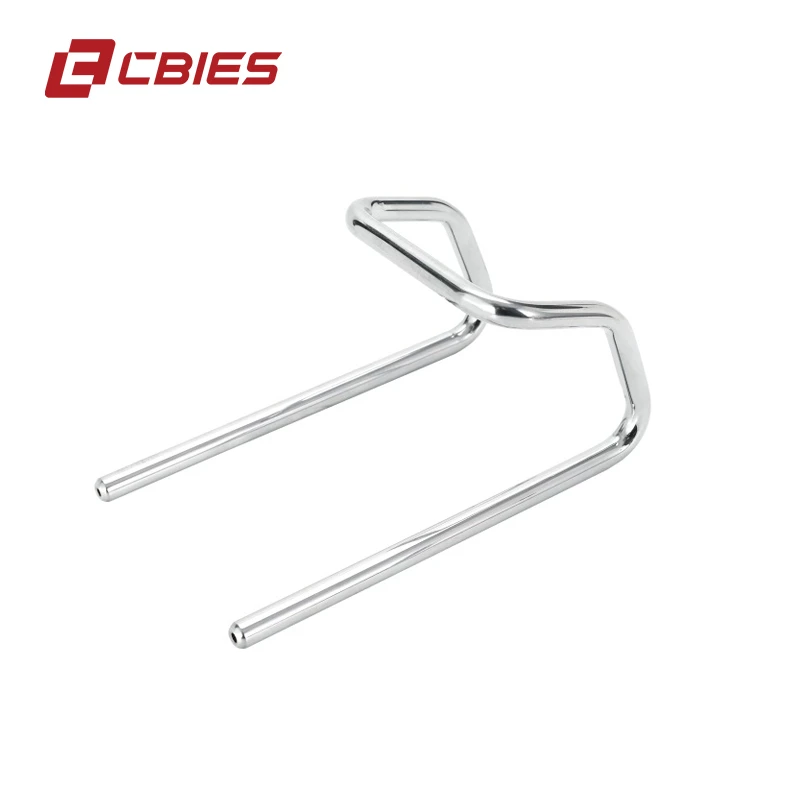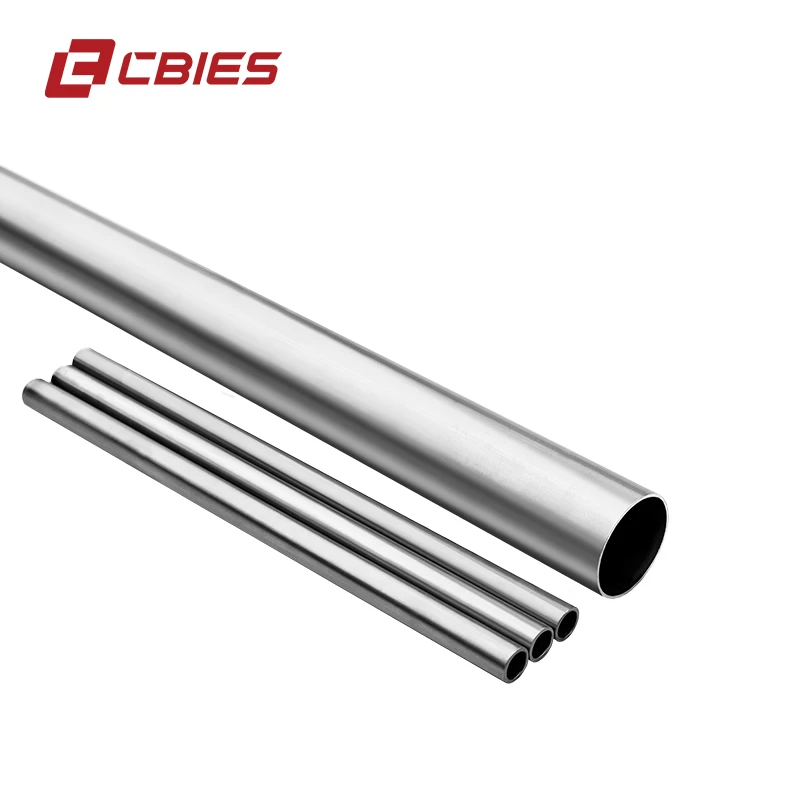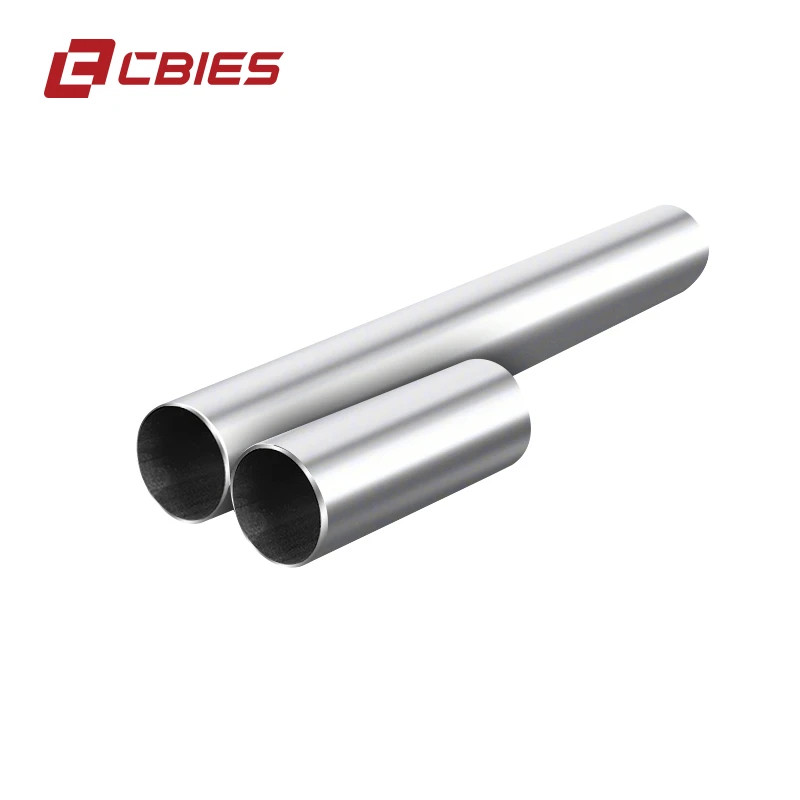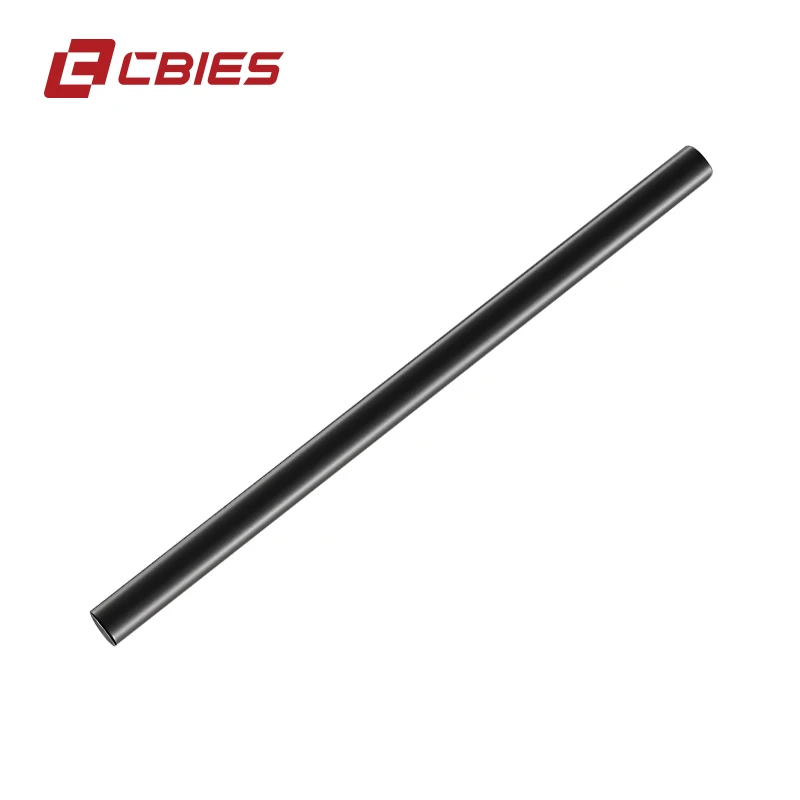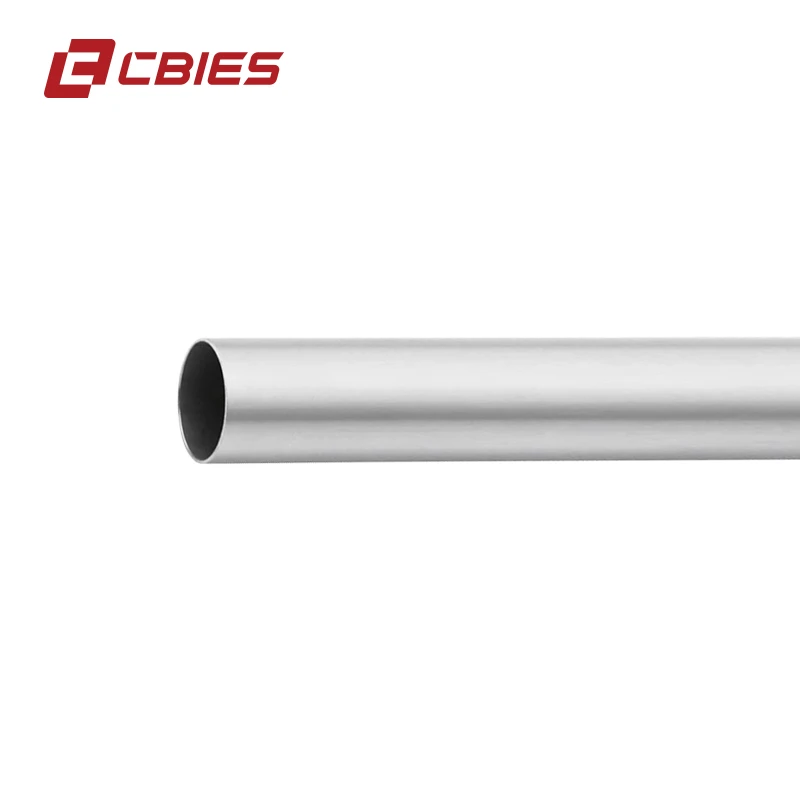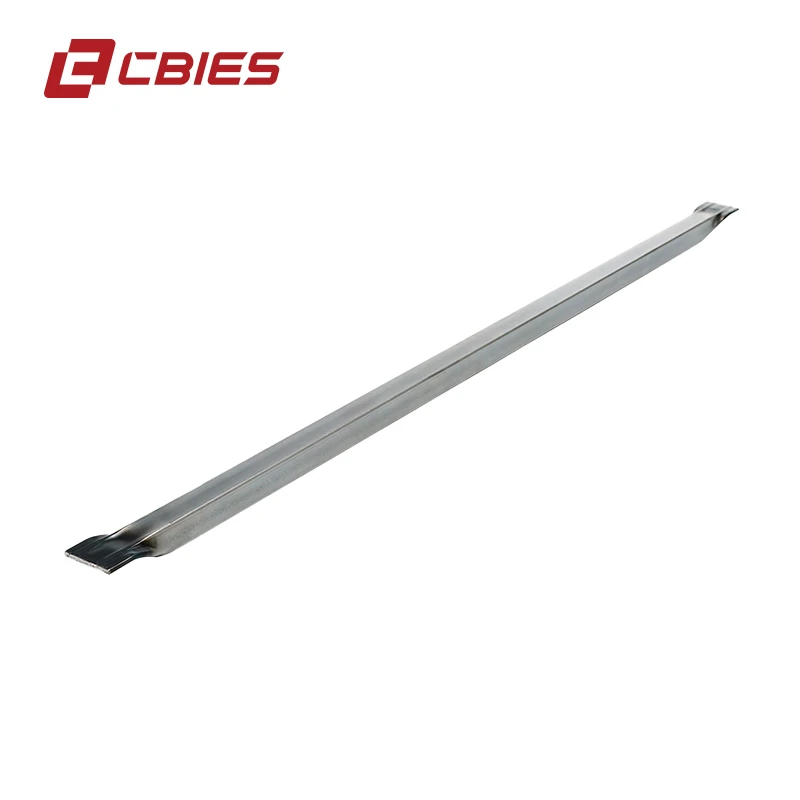` tag holding everything, with a proper hierarchy of `
In today's highly competitive manufacturing landscape, precision, efficiency, and versatility are paramount. Traditional methods often fall short in meeting the stringent demands of modern designs and material complexities. This is where Tube laser cutting emerges as a transformative technology, offering unparalleled accuracy and speed in processing tubular materials. From intricate prototypes to large-scale production runs, Tube laser cutting is reshaping industries by enabling innovative designs and optimizing fabrication processes. Its ability to handle a wide range of materials and create complex geometries with minimal waste positions it as a cornerstone of advanced manufacturing. This comprehensive guide delves into the core aspects of Tube laser cutting, covering its technological prowess, diverse applications, and the strategic advantages it offers.
Understanding the Evolution and Impact of Tube Laser Cutting
The journey of laser cutting technology began in the 1960s, primarily with flat sheet metal. However, the true revolution for tubular components arrived with the advent of dedicated Tube laser cutting machines, which could precisely rotate and manipulate tubes, allowing for multi-axis cutting. Early systems were bulky and less precise, but continuous advancements in laser sources (CO2, Fiber), motion control systems, and software have propelled Tube laser cutting into a state of sophisticated automation and high performance. Fiber lasers, in particular, have significantly improved efficiency and cutting speed for various metals due to their shorter wavelength and higher absorption rates. This evolution has democratized complex fabrication, making it accessible for a broader range of industries previously constrained by the limitations of conventional cutting, drilling, and punching methods.
Current Industry Trends and Future Outlook
- Automation & AI Integration: The trend towards fully automated Tube laser cutting systems, integrated with robotic loading/unloading and artificial intelligence for optimization and predictive maintenance, is accelerating. This reduces manual intervention, increases throughput, and minimizes errors.
- Increased Material Versatility: While traditionally used for steel and aluminum, advancements are enabling more efficient cutting of reflective materials like copper and brass, and even composite tubes, expanding the application scope of Tube laser cutting.
- Enhanced Software Capabilities: Sophisticated CAD/CAM software allows for more complex nesting, automated fixture design, and real-time process monitoring, further optimizing material utilization and reducing lead times.
- Sustainability Focus: Modern Tube laser cutting machines are designed for energy efficiency, reduced material waste, and lower emissions, aligning with global sustainability goals. The precision of laser cutting significantly reduces scrap, contributing to a greener manufacturing footprint.
- Industry 4.0 Connectivity: Integration with smart factory ecosystems, enabling data exchange, remote diagnostics, and seamless workflow management, is becoming standard. This connectivity allows for a more responsive and adaptable production environment.
In-Depth Technical Parameters and Capabilities of Tube Laser Cutting
Tube laser cutting machines are marvels of engineering, designed to deliver exceptional precision and efficiency. The capabilities of these machines are defined by several key technical parameters that dictate their performance and suitability for various applications. Understanding these parameters is crucial for selecting the right equipment or service provider. Key terms include:
- Laser Power (kW): The output power of the laser source, directly impacting cutting speed and maximum material thickness. Higher power means faster cuts and thicker material capabilities.
- Cutting Diameter Range (mm/inches): The minimum and maximum diameters of tubes the machine can process. This range can vary significantly between models.
- Cutting Length (m/feet): The maximum length of the tube that can be loaded and cut by the machine.
- Cutting Speed (m/min or inches/min): The rate at which the laser can cut through material, dependent on material type, thickness, and laser power.
- Positioning Accuracy (mm): The precision with which the laser head can be positioned. High accuracy is critical for complex geometries and tight tolerances.
- Repeatability (mm): The ability of the machine to return to a previously commanded position. Essential for consistent quality in batch production.
- Axis Configuration: Typically 3-axis for basic cutting, but advanced machines can have 5-axis or more, allowing for bevel cuts and complex contours on curved surfaces.
Typical Tube Laser Cutting Machine Parameters
Below is a table outlining common parameters for industrial Tube laser cutting machines. These values can vary based on the specific model and manufacturer, but they provide a general understanding of the technology's capabilities.
| Parameter |
Typical Range (Fiber Laser) |
Explanation / Impact |
| Laser Power |
1 kW - 20 kW+ |
Determines maximum cutting thickness and speed. Higher power for thicker materials and faster production. |
| Tube Diameter Range |
Ø10 mm - Ø300 mm (0.4" - 12") |
The range of tube diameters the machine can accommodate. Specialist machines can handle larger or smaller diameters. |
| Max Tube Length |
6 m - 12 m (20 ft - 40 ft) |
Maximum length of raw tube stock that can be loaded. Longer machines offer greater versatility. |
| Cutting Speed (Mild Steel 6mm) |
~1-3 m/min (39-118 inches/min) |
Speed varies significantly with material type, thickness, and laser power. Higher for thinner materials. |
| Positioning Accuracy |
±0.03 mm (±0.0012") |
Precision of the laser head's movement, crucial for tight tolerances and complex designs. |
| Repeatability |
±0.02 mm (±0.0008") |
Consistency of cuts over multiple parts, ensuring uniform quality in batch production. |
| Max Wall Thickness (Mild Steel) |
15 mm - 40 mm (0.6" - 1.6") |
The thickest material the machine can cut effectively. Fiber lasers excel here. |
| Max Wall Thickness (Stainless Steel) |
10 mm - 30 mm (0.4" - 1.2") |
Capabilities for stainless steel, often slightly less than mild steel due to material properties. |
| Machine Dimensions (LxWxH) |
Approx. 12-25m x 4-6m x 2-3m |
Physical footprint of the machine, including loading/unloading systems. |
These specifications highlight the advanced capabilities of modern Tube laser cutting systems, allowing manufacturers to achieve unprecedented levels of precision and efficiency in their production processes.
The Meticulous Manufacturing Process of Tube Laser Cutting
The manufacturing process using Tube laser cutting is a highly automated and precise sequence of operations that transforms raw tubular stock into finished components. This process is critical for ensuring the high quality, accuracy, and efficiency that define laser-cut products. Here’s a detailed breakdown:
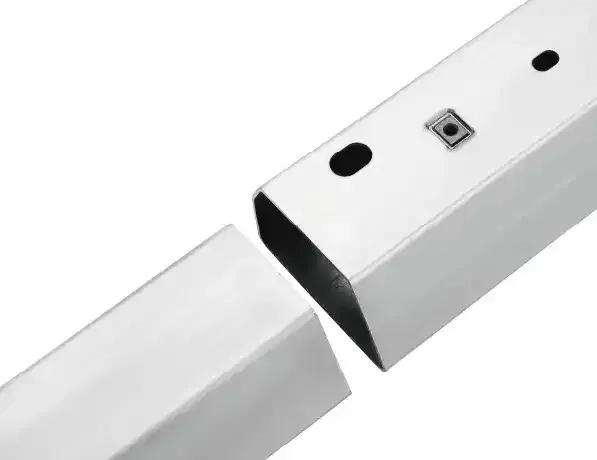
Process Flow Explained:
- Design & Programming (CAD/CAM):
- Phase: Pre-production.
- Description: The process begins with a 3D CAD (Computer-Aided Design) model of the desired tube part. This model is then imported into CAM (Computer-Aided Manufacturing) software. The CAM software generates the cutting path, nesting patterns (to optimize material usage), and machine instructions (G-code). This step involves highly specialized engineers who optimize designs for laser cutting, considering factors like kerf width (the width of the cut), material expansion, and joint integrity. This also ensures compliance with design standards such as ASME B31.3 for process piping or AWS D1.1 for structural welding if subsequent operations are planned.
- Key Node: Digital blueprint creation and optimization.
- Material Selection & Loading:
- Phase: Setup.
- Description: Raw tube stock, which can be round, square, rectangular, oval, or custom profiles, is selected based on the specified material (e.g., carbon steel, stainless steel, aluminum, brass, copper, titanium). Tubes are loaded onto the machine's automated loading system, which feeds them into the cutting area. For large-scale operations, bundle loaders can feed multiple tubes automatically, enhancing throughput.
- Product Material Focus: High-grade materials such as ASTM A106 Grade B for carbon steel piping, ASTM A312 for stainless steel, or specific aluminum alloys (e.g., 6061, 7075) are commonly used, ensuring material integrity and performance in diverse applications.
- Key Node: Raw material preparation and feeding.
- Laser Cutting Operation:
- Phase: Cutting.
- Description: The laser beam (generated by a CO2 or Fiber laser source) is delivered through an optical path to the cutting head. A high-pressure assist gas (oxygen for carbon steel, nitrogen for stainless steel/aluminum) is simultaneously directed through the nozzle to blow away molten material and ensure a clean cut. The tube is precisely rotated and translated by a chuck system while the laser head moves along its axes, executing the programmed cutting path. This simultaneous multi-axis motion allows for intricate holes, slots, contours, and bevels to be cut accurately.
- Manufacturing Process: This is a non-contact thermal cutting process. Unlike traditional mechanical cutting, there's no tool wear or deformation induced by mechanical force. The process is highly controlled, preventing material distortion and heat-affected zone (HAZ) issues to a minimum.
- Key Node: High-precision material transformation.
- Part Unloading & Separation:
- Phase: Post-cutting.
- Description: Once cutting is complete, the finished parts and any scrap pieces are discharged from the machine. Automated sorting systems can separate parts from scrap and place them into designated bins. Some machines include conveyors for efficient removal of finished products.
- Key Node: Component separation and initial sorting.
- Deburring & Finishing:
- Phase: Post-processing.
- Description: Although Tube laser cutting produces very clean edges, some minimal burr or dross might be present, especially on thicker materials or specific material types. Parts undergo a deburring process, either manually or using automated deburring machines, to ensure smooth edges. Depending on the application, further finishing processes like grinding, polishing, or coating may be applied.
- Key Node: Edge refinement.
- Quality Inspection & Certification:
- Phase: Quality Assurance.
- Description: Each cut part undergoes rigorous quality inspection. This includes dimensional checks using precision measuring tools (e.g., calipers, optical comparators, CMMs) to ensure parts meet specified tolerances (e.g., ±0.05mm or tighter). Visual inspections check for surface finish, absence of burrs, and heat effects. Parts must comply with relevant industry standards like ISO 9001 for quality management, ANSI B16.9 for pipe fittings dimensions, or ASTM standards for material composition. Non-destructive testing (NDT) such as eddy current or ultrasonic testing may be performed for critical applications, ensuring internal integrity.
- Detection Standard Focus: Adherence to ISO, ANSI, and ASTM standards is paramount. For example, ISO 9001 ensures a robust quality management system, while ANSI B16.9 specifies dimensions for factory-made wrought buttwelding fittings, ensuring interchangeability and proper fit.
- Key Node: Final quality verification and documentation.
Material & Manufacturing Considerations:
- Product Material: Tube laser cutting is highly effective across a spectrum of materials including:
- Carbon Steel: Common grades like A36, A500, A513, and various structural steels. Offers excellent cut quality and speed with oxygen assist gas.
- Stainless Steel: Grades 304, 316, 409, 430. Nitrogen assist gas provides a clean, oxide-free cut. Ideal for corrosive environments.
- Aluminum: Grades 6061, 5052, 7075. Requires nitrogen assist gas to prevent oxidation and achieve clean cuts. Known for its lightweight and corrosion resistance.
- Brass & Copper: Increasingly processed with high-power fiber lasers. These reflective materials require specific laser parameters and techniques.
- Titanium: Used in aerospace and medical. Tube laser cutting offers precise cuts for these high-value, high-strength materials.
- Manufacturing Craftsmanship: The accuracy of Tube laser cutting often negates the need for secondary machining operations like drilling or punching, simplifying the manufacturing process and reducing costs. It produces parts ready for assembly or welding.
- Estimated Lifespan: The lifespan of components manufactured using Tube laser cutting is primarily determined by the base material's properties and the application environment. However, the precision and minimal heat-affected zone from laser cutting ensure that the material's inherent strength and integrity are maintained, potentially extending the component's service life compared to methods that induce more stress or material degradation. Components for petrochemical or power generation can have service lives exceeding 20-30 years, provided material selection and design are appropriate.
Applicable Industries and Unrivaled Advantages of Tube Laser Cutting
Tube laser cutting technology has permeated a vast array of industries, revolutionizing the way tubular components are manufactured. Its versatility and precision make it indispensable in sectors requiring high-quality, complex tubular structures.
Key Applicable Industries:
- Automotive Industry: Used for chassis components, exhaust systems, roll cages, light frames, and intricate structural elements, where lightweighting and precise fit are critical.
- Construction & Architecture: Fabrication of structural supports, handrails, staircases, decorative elements, and custom architectural designs, often requiring complex joint preparation.
- Furniture Manufacturing: Enables the creation of modern, ergonomic furniture designs with seamless joints and precise component fits for chairs, tables, and frames.
- HVAC Systems: Production of ductwork, vents, and custom pipe fittings that require precise airflow characteristics and easy assembly.
- Agricultural Machinery: Manufacturing of frames, supports, and specialized components for tractors, harvesters, and other farm equipment that need to withstand harsh conditions.
- Medical Devices: Precision cutting of small-diameter tubes for surgical instruments, implants, and diagnostic equipment where extreme accuracy and sterile surfaces are paramount.
- Petrochemical & Energy (Oil & Gas): Production of pipe spools, structural supports for offshore platforms, and specialized fittings for pipelines, where material integrity and resistance to extreme conditions (e.g., high pressure, corrosive fluids) are critical. The precision of Tube laser cutting significantly enhances weldability for these applications, reducing potential leaks and improving safety.
- Metallurgy & Mining: Components for heavy machinery, structural frames, and processing equipment.
- Water Supply & Drainage Systems: Fabrication of custom fittings, manifolds, and supports for water treatment plants, municipal piping, and industrial fluid handling. The clean cuts reduce internal turbulence and corrosion initiation points.
- Fitness Equipment: Manufacturing of frames for treadmills, bikes, and weightlifting equipment, demanding strength and precise assembly.
- Aerospace: High-precision components for airframe structures, engine parts, and hydraulic lines, where weight reduction and absolute precision are non-negotiable.
Advantages in Typical Application Scenarios:
- Energy Efficiency: By minimizing waste and reducing the need for multiple machines (drilling, punching, sawing), Tube laser cutting streamlines production, leading to lower energy consumption per part. The optimized nesting strategies further reduce raw material consumption, which is a significant energy saving.
- Anti-corrosion Enhancement: For materials like stainless steel, Tube laser cutting with nitrogen assist gas produces an oxide-free, clean cut edge. This smooth, non-oxidized surface is less prone to corrosion initiation, especially in harsh environments like those found in the petrochemical or marine industries, significantly extending the lifespan of components compared to thermal cutting methods that leave an oxidized layer.
- Superior Precision & Accuracy: Achieves tolerances down to ±0.02mm, enabling perfect fit-up for welding or assembly without the need for secondary operations like deburring, reaming, or grinding. This reduces overall manufacturing time and costs.
- Design Freedom & Complexity: Allows for intricate cuts, complex geometries, and nesting patterns that are impossible with traditional methods. This opens up new possibilities for product design, reducing part count and simplifying assemblies. For example, interlocking designs for furniture or self-aligning features for structural frames.
- Reduced Material Waste: Advanced nesting software optimizes material utilization, significantly reducing scrap rates. This is not only cost-effective but also environmentally friendly.
- Increased Speed & Throughput: Laser cutting is inherently faster for many applications, especially for complex cuts, compared to sawing, drilling, and punching combined. Automated loading and unloading systems further boost productivity.
- Non-Contact Process: Eliminates tool wear and material deformation (no clamping pressure), ensuring consistent quality and reduced maintenance costs. This is particularly beneficial for thin-walled or delicate tubes.
- Cost-Effectiveness: While the initial investment can be higher, the long-term savings from reduced material waste, faster production cycles, lower labor costs, and elimination of secondary operations make Tube laser cutting highly economical.
- Improved Safety: Automated systems reduce the need for manual handling of raw materials and cut parts, minimizing occupational hazards associated with traditional fabrication.
Choosing Your Partner: A General Comparison of Tube Laser Cutting Service Providers
Selecting the right Tube laser cutting service provider or machine manufacturer is a critical decision that impacts project timelines, quality, and overall cost. While specific brand names won't be compared here, understanding the general criteria for evaluation is essential for making an informed choice.
Key Factors for Comparison:
- Technology & Equipment:
- Fiber vs. CO2 Laser: Fiber lasers offer faster cutting for thin to medium-thick metals, better energy efficiency, and lower maintenance. CO2 lasers are historically strong for very thick materials and some non-metals. Ensure the provider uses modern, high-power fiber laser machines for diverse metal capabilities.
- Machine Capabilities: Check the range of tube diameters, lengths, and wall thicknesses they can handle. Do they have multiple machines to ensure redundancy and capacity for large orders?
- Automation Level: Automated loading/unloading, robotic integration, and sorting capabilities indicate higher efficiency and potentially lower per-unit costs for high-volume orders.
- Expertise & Experience:
- Years in Business: A longer track record often indicates stability and accumulated knowledge.
- Industry Specialization: Does the provider have specific experience in your industry (e.g., automotive, construction, oil & gas)? This ensures they understand specific requirements and standards (Authoritativeness).
- Engineering & Design Support: Can they assist with design optimization for laser cutting (DFM - Design for Manufacturability), nesting, and prototyping? This demonstrates strong technical expertise.
- Certifications: Look for certifications like ISO 9001 (Quality Management System), CE marking, or specific industry accreditations (e.g., AWS welding certifications if post-laser cutting welding is part of their service). These confirm adherence to international quality and safety standards.
- Quality Control & Assurance:
- Inspection Protocols: What quality control measures are in place? Do they use CMMs (Coordinate Measuring Machines), optical scanners, or other advanced inspection tools?
- Tolerance Capabilities: Can they consistently meet your required precision tolerances? Request sample parts or previous project data.
- Material Traceability: Do they provide material certifications and ensure full traceability from raw stock to finished part?
- Service & Support:
- Customer Service: Responsiveness, clear communication, and dedicated project managers are crucial.
- Lead Times & Delivery: Can they meet your production schedules? Inquire about typical lead times and expedited options.
- Post-Sales Support: What kind of support is offered for any issues or modifications after delivery?
- Cost Structure:
- Pricing Model: Understand how they quote (per part, per hour, per meter of cut).
- Value-Added Services: Do they offer additional services like bending, welding, or finishing, which might streamline your supply chain and offer better overall value?
By thoroughly evaluating these aspects, businesses can identify a Tube laser cutting partner that aligns with their specific needs, quality expectations, and budgetary constraints, ensuring a successful collaboration and high-quality end products.
Custom Solutions and Exemplary Application Cases
The true power of Tube laser cutting lies not just in its precision, but in its ability to enable highly customized solutions that address unique engineering challenges. Manufacturers leverage this technology to push the boundaries of design, functionality, and efficiency across diverse projects.
Developing Custom Tube Laser Cutting Solutions:
- Collaborative Design Process: It often begins with a deep collaboration between the client's engineering team and the Tube laser cutting provider's experts. This involves understanding the product's function, environmental conditions, assembly requirements, and aesthetic goals.
- Prototyping & Iteration: For complex or new designs, rapid prototyping using Tube laser cutting is invaluable. Multiple iterations can be quickly produced and tested, allowing for design optimization before mass production. This significantly reduces development cycles and costs.
- Material & Weld Prep Optimization: Custom solutions often involve precise joint preparations (e.g., fishmouth cuts, saddle notches) that are critical for strong and clean welds. Tube laser cutting can create these weld-ready features directly, eliminating manual notching, grinding, and fitting. This is particularly important for high-integrity applications like pressure vessels or structural trusses.
- Assembly Simplification: By integrating interlocking features, self-aligning tabs, and bolt holes directly into the tube design, Tube laser cutting can drastically simplify the assembly process, reducing labor time and the need for complex jigs and fixtures.
Exemplary Application Cases (Experience & Trustworthiness):
At CBIES, our commitment to excellence in Tube laser cutting is demonstrated through a portfolio of successful projects and consistent client satisfaction. Here are examples showcasing the practical application and benefits of our services:
- Case Study 1: Automotive Roll Cage for Racing Vehicle
- Challenge: A performance vehicle manufacturer required a lightweight yet incredibly strong roll cage with complex intersecting tubes, precise angles for optimal safety, and quick assembly for racing teams. Traditional methods struggled with accuracy and lead time.
- Solution: We utilized our advanced Tube laser cutting capabilities to cut 4130 Chromoly steel tubes with intricate fishmouth and saddle joints, ensuring a perfect fit-up. The laser's precision eliminated the need for manual grinding, significantly speeding up the welding process.
- Outcome: The client achieved a perfectly fitted, lightweight, and extremely strong roll cage, with a 40% reduction in assembly time compared to previous methods. The seamless joints provided superior structural integrity and aesthetic appeal. This project underscores our commitment to precision and efficiency in high-stakes applications.
- Case Study 2: Custom Architectural Façade Supports
- Challenge: An architectural firm needed unique, visually striking structural supports for a modern building façade. These supports involved large-diameter stainless steel tubes with numerous precisely angled and sized cut-outs for integration with glass panels and lighting fixtures. Aesthetics and structural integrity were equally critical.
- Solution: Our Tube laser cutting system precisely cut the complex patterns and connection points on the stainless steel tubes. The non-contact nature of the laser ensured no surface distortion, maintaining the aesthetic quality of the brushed stainless finish. Nitrogen assist gas prevented oxidation, ensuring a clean, weld-ready edge.
- Outcome: The project was delivered with unprecedented accuracy, allowing for rapid on-site assembly. The resulting façade was structurally sound and visually stunning, earning acclaim for its innovative design. Our ability to handle large diameter tubes and complex geometries was key to success.
- Case Study 3: Petrochemical Pipeline Manifold for Corrosive Environment
- Challenge: A client in the petrochemical sector required a custom manifold for a highly corrosive environment, demanding specific metallurgy (Duplex Stainless Steel 2205) and absolute precision for welding to minimize potential leak points. Manual fabrication was proving inconsistent.
- Solution: We employed our high-power fiber Tube laser cutting system to precisely cut and chamfer the Duplex Stainless Steel tubes. The automated process ensured consistent bevels and accurate hole placements, significantly improving weld preparation. Our ISO 9001 certified process ensured full material traceability and stringent quality checks, including dimensional verification to ANSI B16.9 standards.
- Outcome: The client received manifold components with superior fit-up, leading to higher quality welds, reduced re-work, and enhanced safety. The excellent cut quality of the Duplex Stainless Steel contributed to the component's anti-corrosion properties and extended its predicted service life in the harsh operating conditions. This project exemplifies our adherence to rigorous industry standards and our capability in specialized material handling for critical infrastructure.
Enhancing Credibility: Trustworthiness and Support
At CBIES, we understand that trust is built on transparency, reliability, and unwavering support. Beyond cutting-edge technology, our commitment to customer satisfaction and operational excellence forms the cornerstone of our service delivery.
Quality Assurance & Certification:
Our operations are guided by stringent quality management systems. We are proud to be ISO 9001 certified, ensuring that every step of our Tube laser cutting process, from material sourcing to final inspection, adheres to international quality standards. This commitment extends to:
- Material Sourcing: Only high-quality, certified materials from reputable suppliers are used, with full traceability documentation.
- In-Process Inspection: Regular checks are conducted throughout the cutting process to monitor dimensional accuracy and cut quality.
- Final Inspection: Comprehensive dimensional and visual inspections are performed on all finished parts to ensure they meet exact specifications and industry standards (e.g., ASTM, ANSI).
- Calibration: All measuring equipment and machines are regularly calibrated to maintain precision and accuracy.
Delivery & Logistics:
- Lead Time: Our typical lead time for Tube laser cutting projects varies based on complexity and volume, generally ranging from 5-15 business days after design approval. Expedited services are available for urgent requirements.
- Packaging: Parts are meticulously packaged to prevent damage during transit, utilizing appropriate materials and methods suitable for the component type and shipping distance.
- Global Shipping: We offer flexible shipping options, including domestic and international logistics partners, to ensure timely and secure delivery worldwide.
Warranty & Support:
- Quality Guarantee: We stand by the quality of our Tube laser cutting services. All parts are guaranteed to meet the agreed-upon specifications and quality standards. In the rare event of a defect attributable to our process, we commit to prompt resolution, including repair or replacement.
- Dedicated Customer Support: Our team of experienced professionals is available to provide technical assistance, answer queries, and offer solutions throughout your project lifecycle. From initial inquiry to post-delivery support, we ensure a seamless and responsive experience.
- After-Sales Service: Our commitment extends beyond delivery. We welcome feedback and are available for any follow-up questions regarding part performance or future project planning.
Professional FAQ on Tube Laser Cutting
To further enhance your understanding of Tube laser cutting technology, here are answers to some frequently asked professional questions:
- What is the maximum wall thickness a fiber Tube laser cutting machine can typically cut?
A high-power fiber Tube laser cutting machine (e.g., 10kW+) can typically cut mild steel up to 30-40mm (1.2-1.6 inches) and stainless steel up to 20-30mm (0.8-1.2 inches), depending on the specific machine's power and capabilities.
- How does the choice of assist gas affect Tube laser cutting quality?
The assist gas (oxygen or nitrogen) is crucial. Oxygen is used for carbon steel, creating an exothermic reaction that speeds up the cut but can leave an oxidized edge. Nitrogen is used for stainless steel, aluminum, and other non-ferrous metals to produce an oxide-free, clean cut edge, essential for subsequent welding or coating and for enhancing corrosion resistance.
- Can Tube laser cutting create bevels or chamfers on tube ends?
Yes, advanced Tube laser cutting machines, especially those with 3D or 5-axis cutting heads, are capable of producing precise bevels (angled cuts) and chamfers on tube ends. This eliminates secondary operations like grinding for weld preparation, making components ready for immediate assembly.
- What types of tube profiles can be processed by Tube laser cutting?
Tube laser cutting machines are highly versatile and can process a wide range of profiles including round, square, rectangular, oval, and even custom open or asymmetrical profiles. The key is the machine's chuck system and software's ability to accurately rotate and manipulate the specific geometry.
- What are the typical dimensional tolerances achieved with Tube laser cutting?
With modern machines and optimized processes, Tube laser cutting can achieve very tight tolerances, typically in the range of ±0.05mm to ±0.1mm (±0.002 to ±0.004 inches) for linear dimensions and hole positions, and angular accuracy often within ±0.5 degrees. This precision significantly reduces post-processing.
- How does Tube laser cutting contribute to material savings and reduced waste?
Tube laser cutting significantly reduces material waste through advanced nesting software, which optimizes the layout of multiple parts on a single tube to minimize scrap. Additionally, the ability to create complex features like interlocking joints directly on the tube reduces the need for separate components and fastening hardware, further saving material and simplifying assembly.
- Is Tube laser cutting suitable for large volume production, or is it better for prototyping?
Tube laser cutting is highly suitable for both prototyping and large-volume production. For prototyping, its speed and flexibility allow for quick iterations. For large volumes, its high speed, automation capabilities (e.g., automatic loading and unloading), and consistent precision make it extremely efficient and cost-effective, providing significant throughput.
In summary, Tube laser cutting represents a pinnacle of modern manufacturing. Its precision, speed, and versatility are unmatched, offering significant advantages over traditional fabrication methods. From enabling complex designs to streamlining production and enhancing product quality, this technology is a vital asset for industries striving for innovation and efficiency. As we continue to advance towards smarter, more automated manufacturing ecosystems, the role of Tube laser cutting will only grow, solidifying its position as an indispensable tool for engineers and manufacturers worldwide.
References:
 Afrikaans
Afrikaans  Albanian
Albanian  Amharic
Amharic  Arabic
Arabic  Armenian
Armenian  Azerbaijani
Azerbaijani  Basque
Basque  Belarusian
Belarusian  Bengali
Bengali  Bosnian
Bosnian  Bulgarian
Bulgarian  Catalan
Catalan  Cebuano
Cebuano  Corsican
Corsican  Croatian
Croatian  Czech
Czech  Danish
Danish  Dutch
Dutch  English
English  Esperanto
Esperanto  Estonian
Estonian  Finnish
Finnish  French
French  Frisian
Frisian  Galician
Galician  Georgian
Georgian  German
German  Greek
Greek  Gujarati
Gujarati  Haitian Creole
Haitian Creole  hausa
hausa  hawaiian
hawaiian  Hebrew
Hebrew  Hindi
Hindi  Miao
Miao  Hungarian
Hungarian  Icelandic
Icelandic  igbo
igbo  Indonesian
Indonesian  irish
irish  Italian
Italian  Japanese
Japanese  Javanese
Javanese  Kannada
Kannada  kazakh
kazakh  Khmer
Khmer  Rwandese
Rwandese  Korean
Korean  Kurdish
Kurdish  Kyrgyz
Kyrgyz  Lao
Lao  Latin
Latin  Latvian
Latvian  Lithuanian
Lithuanian  Luxembourgish
Luxembourgish  Macedonian
Macedonian  Malgashi
Malgashi  Malay
Malay  Malayalam
Malayalam  Maltese
Maltese  Maori
Maori  Marathi
Marathi  Mongolian
Mongolian  Myanmar
Myanmar  Nepali
Nepali  Norwegian
Norwegian  Norwegian
Norwegian  Occitan
Occitan  Pashto
Pashto  Persian
Persian  Polish
Polish  Portuguese
Portuguese  Punjabi
Punjabi  Romanian
Romanian  Samoan
Samoan  Scottish Gaelic
Scottish Gaelic  Serbian
Serbian  Sesotho
Sesotho  Shona
Shona  Sindhi
Sindhi  Sinhala
Sinhala  Slovak
Slovak  Slovenian
Slovenian  Somali
Somali  Spanish
Spanish  Sundanese
Sundanese  Swahili
Swahili  Swedish
Swedish  Tagalog
Tagalog  Tajik
Tajik  Tamil
Tamil  Tatar
Tatar  Telugu
Telugu  Thai
Thai  Turkish
Turkish  Turkmen
Turkmen  Ukrainian
Ukrainian  Urdu
Urdu  Uighur
Uighur  Uzbek
Uzbek  Vietnamese
Vietnamese  Welsh
Welsh  Bantu
Bantu  Yiddish
Yiddish  Yoruba
Yoruba  Zulu
Zulu 




